JKBOSE 10th Class Social Science Solutions chapter – 2 Employment
JKBOSE 10th Class Social Science Solutions chapter – 2 Employment
JKBOSE 10th Class Social Science Solutions chapter – 2 Employment
Jammu & Kashmir State Board JKBOSE 10th Class Social Science Solutions
INTRODUCTION TO THE CHAPTER
- Approaches Towards Employment Generation. Agriculture (including horticulture, floriculture, sericulture, food processing and animal husbandary), Handlooms and Handicrafts, Industries (small scale and Rural industries), Tourism and Travels, Education and Health, Large Infrastructure projects (Road, Railways, power generation), Information Technology and Telecommunication as well as construction sector are playing a vital role in employment generation.
- Tourism Industry in J&K. The state has been benefitted from tourism manifold. The valley of Kashmir is famous for scenic beauty, Jammu for Mata Vaishno Devi and ancient temples and Ladakh for Gumpas. There are many places of tourist interest like Bhaderwah called Chhotta Kashmir, Sukrala Mata, Noori Chamb, Bufflaiz, Buddha Amarnath, Nagah Sahib, Sahadara Shrief, Mata Vaishno Devi Temple, Shiv Khori, Patnitop, Sanasar, Mansar Lake, Rivers like Jhelum, the Lidder, Verinag spring, Achhabal, Gulmarg, Wullar Lake, Mansar Lake, Hazartbal Shrine, Shankarachary Temple, Gurudawara Chatti Patshahi, Khir Bhawani Temple, Nishat Garden, Cheshma Shahi, Dal Lake, Drass, Kargil, Zanskar, Hemis Gompa etc.
- Benefits from Tourism. Tourism raises the tax revenue, earns foreign exchange, develops backward and rural areas by generating employment.
- Potential and Scope for Employment Generation in the State. In the state prospects of any large scale expansion in public sector jobs are not very bright. So other avenues would have to be explored for providing sustainable employment to the people through the following two routes: (i) By accelerating economic growth of the state (ii) More effective implementation of employment-oriented schemes and programmes.
- Special Employment Programmes. PMRY, REGP, SGSY, NREGS and Jammu and Kashmir Self- Employment Schemes.
- Skill, Employment and Employment Scheme for Jammu and Kashmir. The export group in consultation with the Ministry of Rural Development, Govt. of India has developed a special placement linked, market driven skill training programme for the Jammu and Kashmir Youth which will provide placement linked, market driven skill training to 50,000 to 1,00,000 youth in 3 to 5 years.
- Special Industry Initiative. To engage the youth, one initiative could be identified 10-20 companies across industrial sector to partner with an educational institution and run special training programmes to enhance employ- ability of 8000 youth per annum in J&K over a five year period.
- PPP. It is a Public Private Partnership model in which private enterprise will help the government to undertake development project by sharing profits.
- Special Scholarship Scheme of Jammu and Kashmir.
- The Export Group recommends that 5000 scholarships per annum may be awarded the next 5 years.
- To enhance the faculty skill set to built up the capacity of the educational institutions in J&K.
- IGNOU (Indira Gandhi National Open University) has agreed to launch an interactive platform for registering students in J&K for job placement.
- Sectoral Initiatives taken by the Government for Employment.
- To increase the capacity of highly labour intensive livestock sector to cater the poor and absorb large number of skilled and unskilled workers.
- To promote more tourism which has also positive externalities for other sectors like handicrafts, handlooms and I transport.
- To promote handicraft sector which is employing 4-5 lakhs artisans.
- To promote micro, small and medium enterprises for socio-economic development and employment generation.
- To create infrastructure in terms of IT/BPO for earning foreign exchange and employment generation.
J&K class 10th Social Science Employment Textbook Questions and Answers
EXERCISE/PROJECT ACTIVITY
Q. 1. Paste on your scrap book picture of snow bound huts and trees.
Ans. Students can paste the pictures of snow bound huts and trees of J&K State in their scrap books in the following way :

Q. 2. Paste on your scrap book pictures of Hemis Gumpas, Dragon Dance of Ladakh, Tulip Flowers, Trout Fish, Verinag Spring, Cable car in Gulmarg, Hazratbal Shrine and Dal Lake.
Ans. (i) Pictures of Hemis Gumpas
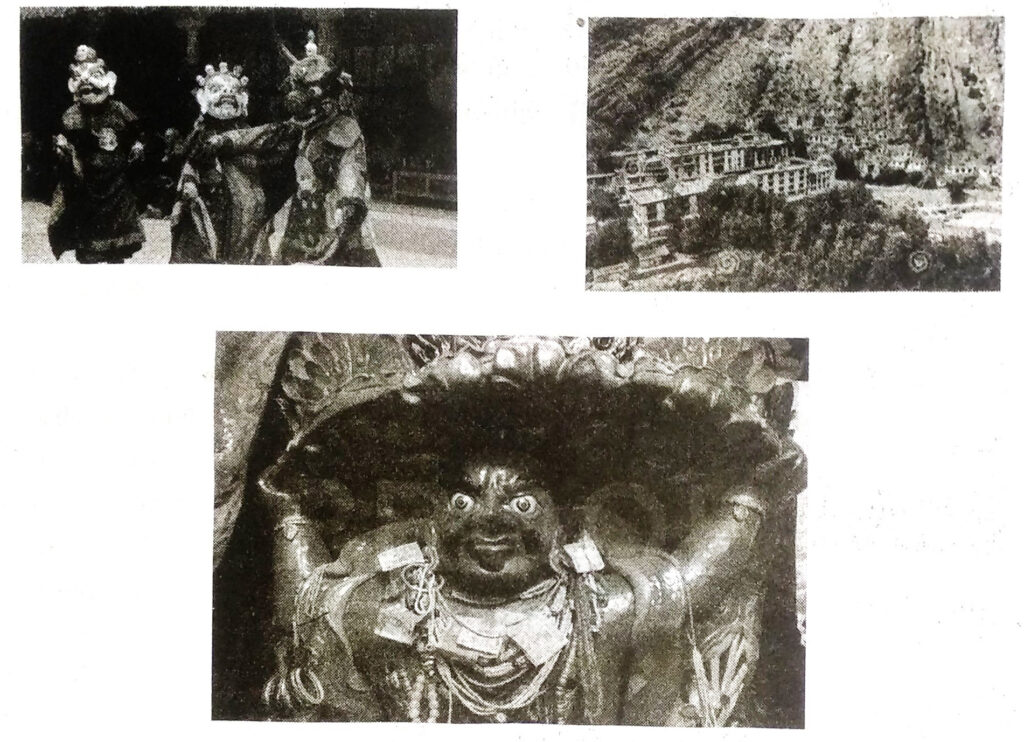
(ii) Pictures of Dragon Dance of Ladakh

(iii) Tulip Flowers
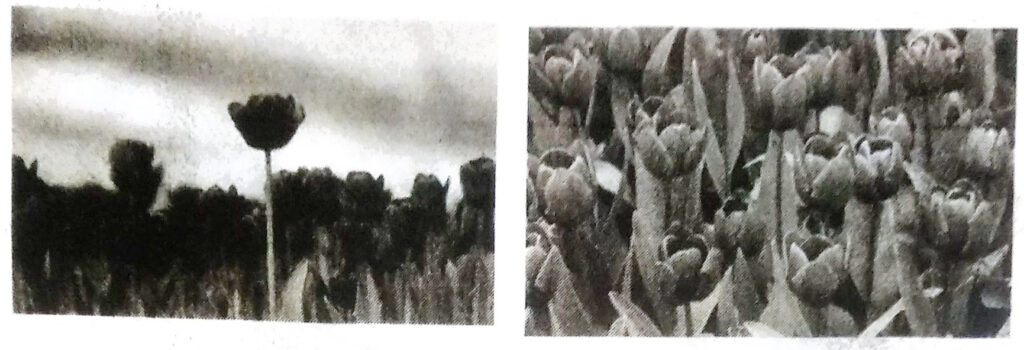
(iv) Trout Fish
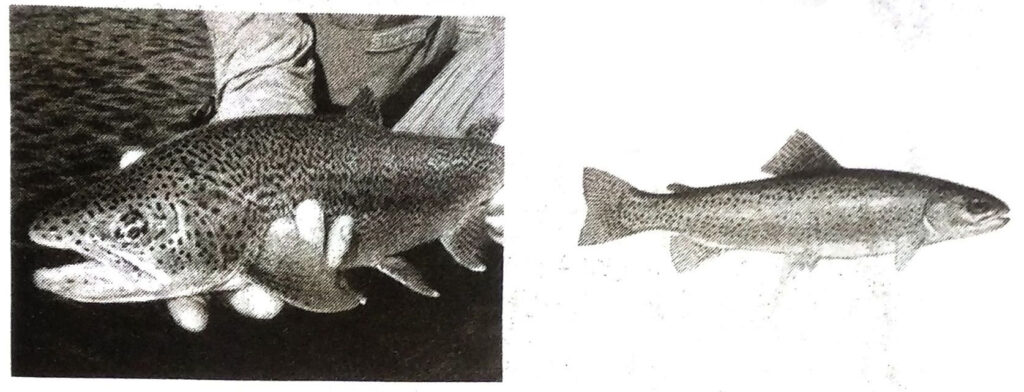
(v) Verinag Spring

(vi) Cable Car in Gulmarg
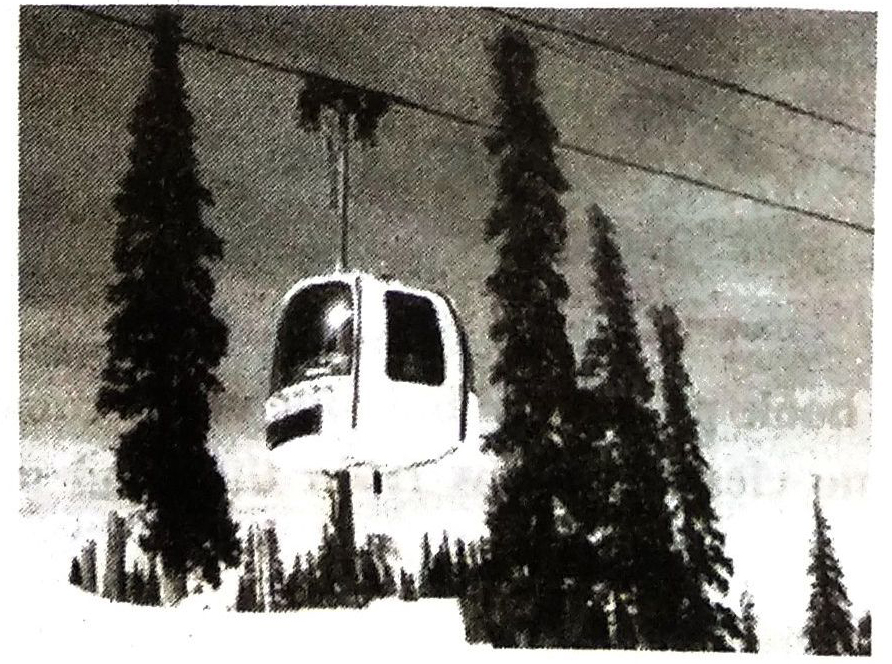
(vii) Hazratbal Shrine
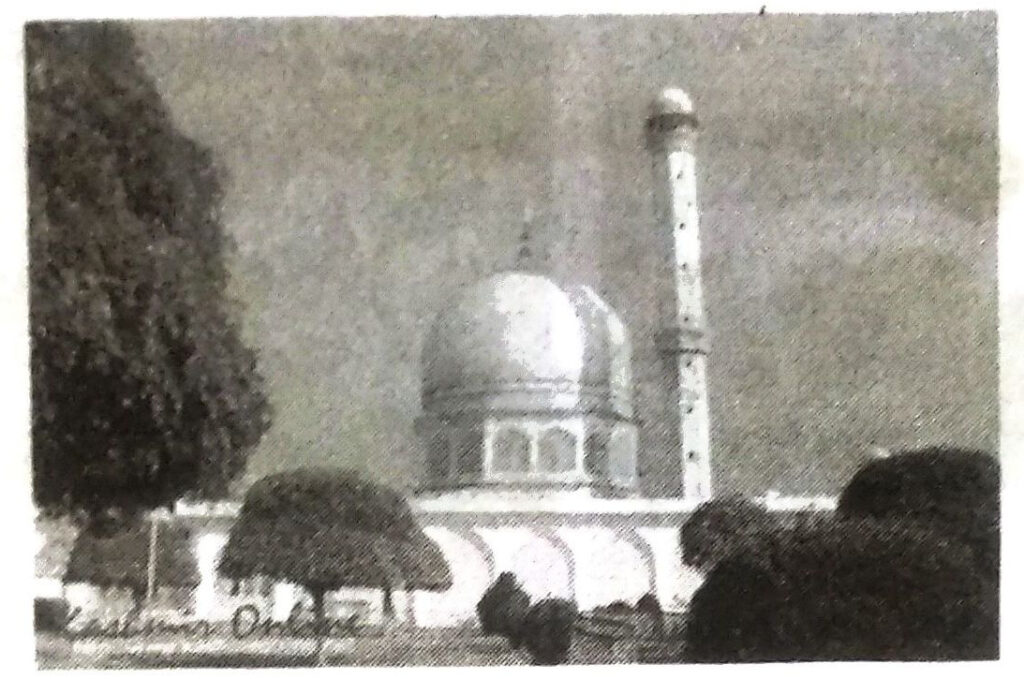
(viii) Dal Lake

Q. 3. Paste on your scrap book pictures of building under construction, BRO repairing roads, snow cutting machine clearing snow from the road in Jammu and Kashmir Highway.
Ans. (i) Building Under Construction
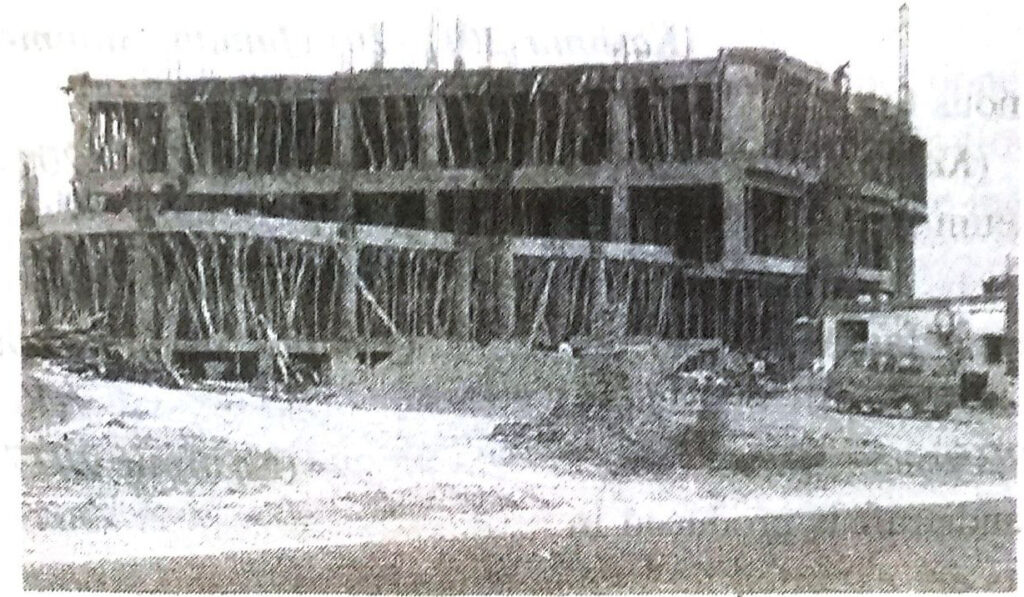
(ii) BRO Repairing Roads

(iii) Snow Cutting Machine clearing Snow from the road in Jammu and Kashmir Highway

Fill in the blanks
1. Hari Parbat is situated in ………….. .
Ans. Srinagar
2. Kokernag is famous for …………. .
Ans. Gardens and largest fresh water springs in Kashmir
3. Dogra Art Museum is famous for ………….. .
Ans. Pahari miniature paintings from Bhasoli
4. The river Jhelum is famous for …………… .
Ans. Its diversity of exotic flora and fauna
5. Full form of PPP is …………. .
Ans. Public Private Partnership
6. Paper mache handicraft is produced in …………. .
Ans. Kashmir
7. Kashmiri carpets are exported to foreign countries in ……….. .
Ans. Middle East and Europe
8. Hemis Gumpas are situated at …………. .
Ans. Ladakh
Very Short Answer Type Questions
Q. 1. Identify places of religious pilgrimage in Jammu and Kashmir.
Ans. Places of religious pilgrimage in Jammu and Kashmir are :
(i) Mata Vaishno Devi Temple
(ii) Amarnath Cave
(iii) Hemis Gumpas at Ladakh
(iv) Hazartbal Shrine
(v) Sukrala Mata
(vi) Noori Chamb
(vii) Nagali Sahib
(viii) Sahadara Shrief
(ix) Shiv Khori
(x) Shankaracharya Temple
(xi) Gurudawara Chatti Patshahi
(xii) Khir Bhawani Temple.
Q. 2. Write down the main principle of PPP.
Ans. Public Private Partnership (PPP) is defined as a co-operative venture between the public and private sectors, built on the expertise of each partner, that best meets clearly defined public needs through the appropriate allocation of resources, risks and rewards. Under PPP principle private enterprise helps the government to undertake development project by sharing profits.
Q. 3. What is the role of Handicraft sector in employment generation in Jammu and Kashmir ?
Ans. The Handicraft sector in Jammu and Kashmir occupies an important place with a fine tradition of craftsman, employing 4-5 lakh artisans, 179 major crafts clusters and revenue generation of 1000 crore plus. This sector is highly labour intensive and contributes significantly to employment generation in Jammu and Kashmir. Handicraft has underperformed in the state due to lack of Kashmir brand, poor quality control, obsolete designs, exploitative middlemen and competition from machine-made fabrics.
Q. 4. Write a brief note on micro, small and medium scale industries in employment generation.
Ans. The role of micro, small and medium scale industries in socio-economic development and employment generation is well established. The sector has not done well in the state due to a number of reasons such as inadequate local demand, poor credit flows and distance from markets. As peace returns to the state, private investments and large industry will also come back bringing sustainable growth and jobs.
Q. 5. How can employment potential in Jammu and Kashmir be increased ?
Ans. Employment potential in Jammu and Kashmir can be increased particularly through the following two routes:
(i) By accelerating the rate of economic growth of the state.
(ii) More effective implementation of employment oriented schemes and programmes.
Extending support to enterpreneurs to set up small and medium enterprises for self employment would appear to be the most effective and durable way of doing this.
Q. 6. Name the programmes conducted by infosys development centers.
Ans. Infosys development centers have conceptualized several unique programmes aimed at evolving a model through which Infosys and academic institutions can partner for competitiveness to enhance the pool of highly capable talent for growth requirements in the Information Technology (IT) and Business process Outsourcing (BPO).
One important dimension to the interaction of the academicians with the industry to understand their expectations of entry level student skills. An interesting example of this connect is the Faculty Enhancement Programme (FEP) conducted by the Infosys Development Centers which have trained 4900 faculty members from engineering institutions.
Long Answer Type Questions
Q. 1. Discuss the role of tourism in generating employment in Jammu and Kashmir.
Or
Sketch the benefits from tourism to Union Territory of Jammu and Kashmir.
Ans. Tourism in Jammu and Kashmir is one of the most important sectors of the economy. Being the largest service industry, tourism is a significant contributor to the state GDP, earns foreign exchange for the country, provides wide spread employment, yields tax revenue etc. Jammu and Kashmir has immense potential for pilgrimage tourism also. Therefore, it attracts large number of pilgrims from various parts of India. Pilgrimage tourism thus provides an extra boost to the state’s economy and employment generation. The trekking routes, mountaineering, winter sports, water sports, golfing, fishing etc. also have tremendous scope of attracting tourists not only from India but also from abroad. In this way, tourism is generating employment in Jammu and Kashmir.
The state has great potential of religious tourism. In 2012 in Kashmir Valley 6,21,000 tourists visited Amaranath cave, while 13,08,765 domestic/foreign tourists visited Mata Vaishno Devi and 1,78,750 tourists visited Ladakh which results in generating employment opportunities in the state.
Q. 2. Write down sectoral initiatives by the government to generate employment in Jammu and Kashmir.
Ans. Following are the sectoral initiatives taken by the government to generate employment in Jammu and Kashmir :
- By increasing productivity of highly labour intensive livestock sector, Increased public investment in poultry sector, emphasis on tackling diseases and infertility in dairy, improvised agronomic practices for quality fodder production are specific areas which will increase employment potential of the sector.
- The tourism sector with its potential in employing people across the skill spectrum and positive externalite for other sectors like handicrafts, handlooms and transport occupies an important place in the development and employment strategy of Jammu and Kashmir.
- The handicraft sector in the state occupies an important place with a fine tradition of craftsmen, employing 4-5 lakh artisans. Both the central and state governments have taken number of initiatives to remove the bottlenecks of this sector like establishing a carpet cluster in Srinagar area, obtaining a Geographical indication for Sozni embroidery, Pashmina and Kani Shawls and starting a skill development scheme for craftsmen.
- The role of micro, small and medium enterprises increasing the scope of Prime Minister’s employment guarantee programme (PMEGP) and purchase preferences in government procurement will help the revival of this sector in Jammu and Kashmir.
- IT/BPO sector has showcased India’s talent emerging as an important foreign exchange earner, but in Jammu and Kashmir it is still in process of spreading its wings. Information Technology (IT) and Business Process Outsourcing (BPO) has attracted a number of young entrepreneurs but the growth in the sector has been constrained by lack of connectivity, reluctance of talent from the rest of the country to work in the state and poor network of educational institutions in I.T.
Very Short Answer Type Questions
Q. 1. Why do tourists visit Jammu and Kashmir ?
Ans. The valley of Kashmir for scenic beauty, Jammu for Mata Vaishno Devi and ancient temples and Ladakh for Gumpas are visited by tourists.
Q. 2. Which place of Jammu and Kashmir is known as Chhotta Kashmir ?
Ans. Bhaderwah is called as Chhotta Kashmir.
Q. 3. What is the distance of Mansar Lake from Jammu ?
Ans. It is situated 62 km. from Jammu.
Q. 4. Write any one benefit from tourism.
Ans. It generates employment.
Q. 5. Write any one sector which provides gainful employment in J&K.
Ans. Agriculture which includes horticulture, floriculture, food process and animal husbandry.
Q. 6. What avenue should be explored for providing employment in the state ?
Ans. By accelerating the rate of economic growth of the state.
Q. 7. What is the percentage of wage earners in the state of J&K ?
Ans. It is 45.18 per cent.
Q. 8. What is PPP ?
Ans. It is basically Public Private Partnership in which private enterprise help the government to undertake development project by sharing profits.
Q. 9. Identify the places of Tourist interest in J&K.
Ans. Jammu for Mata Vaishno Devi, ancient temples and Ladakh for Gumpas.
Q. 10. What is Jammu and Kashmir State Self employment scheme?
Ans. Government of India has developed a special placement linked, market driven skill training programme for the J&K people.
Q. 11. What is the full form of MSME ?
Ans. Ministry of Micro, Small and Medium Enterprises.
J&K class 10th Social Science Manufacturing Industries Important Questions and Answers
Objective Type Questions
Multiple Choice Questions
1. The percentage of self employment in J&K is …………
(A) 45.18%
(B) 16.65%
(C) 38.17%
(D) 40.16%.
Ans. (C) 38.17%.
2. What is the percentage of regular salaried employment in J&K ?
(A) 16.65%
(B) 38.17%
(C) 40.30%
(D) 19.85%.
Ans. (A) 16.65%.
3. How many scholarships shall be awarded per annum for the next 5 year as per the recommendation of expert group ?
(A) 4000
(B) 5000
(C) 6000
(D) 9000.
Ans. (B) 5000.
4. BPO stand for………….
(A) Business Process Outsourcing
(B) Business Process Organisation
(C) Block Problems Office
(D) Balance of Payment.
Ans. (A) Business Process Outsourcing.
5. Name the programme conducted by the Infosys Development centres in J&K.
(A) RPC
(B) FEP
(C) REG
(D) None of these.
Ans. (B) FEP.
6. There are …………… major craft clusters in Jammu and Kashmir.
(A) 178
(B) 179
(C) 180
(D) 181
Ans. (B) 179.
7. The infosys development centres have trained …………. faculty members from engineering institutions.
(A) 4700
(B) 4800
(C) 4900
(D) 5000.
Ans. (C) 4900.
8. Hari Parbat is situated in ……………
(A) Srinagar
(B) Kupwara
(C) Ganderbal
(D) Leh.
Ans. (A) Srinagar.
9. Handicraft sector in J&K occupies an important place with a fine tradition of craftsman employing ……………
(A) 2-3 lakh artisans
(B) 3-4 lakh artisans
(C) 4-5 lakh artisans
(D) 5-6 lakh artisans.
Ans. (C) 4-5 lakh artisans.
10. The expert group recommends that 5000 scholarships be awarded for next …………
(A) 3 years
(B) 4 years
(C) 5 years
(D) 6 years.
Ans. (C) 5 years.
11. The tourism sector provides employment generation in …………
(A) Hotels
(B) Catering
(C) Travel Sector
(D) All of these.
Ans. (D) All of these.
12. Kashmir is known throughout the world for :
(A) Handicraft
(B) Minerals
(C) Forest
(D) None of these.
Ans. (A) Handicraft.
Fill in the blanks
1. Amar Mahal is situated at ……………
Ans.Jammu
2. Two ancient temples of …………. as also a temple of Durga are situated in the vicinity of the Mansar Lake.
Ans.Umapati Mahadev and Narsimha
3. J&K has great potential of religious ………….. .
Ans.Tourism
4. ……………… and tourism is the fastest growing industry in India.
Ans.Travel
5. The Handicraft sector in Jammu and Kashmir is employing………. lakh artisans.
Ans. 4–5
6. IGNOU has agreed to launch an interactive platform for registering students in J&K for job ………
Ans.Placement
7. The special industrial package announced for J&K has been a step in the right. ………
Ans.Direction
8. Jammu and Kashmir has a large talent pool of ………….. .
Ans.Information Technology
9. River Jhelum is famous for …………….. .
Ans.Its diversity of exotic flora and fauna
10. There are ……………… major craft clusters in J&K.
Ans. 179
True or False
1. Tourism raises the tax revenue and foreign exchange.
Ans. True
2. Gumpas are situated in Jammu region.
Ans. False
3. IGNOU has agreed to launch an interactive platform for registering students in J&K for job placement.
Ans. True
4. PMRY, REGP, SGSY and NREGS are special employment generation programmes in J&K.
Ans. True
5. The Task Force constituted by the Central Government on creation of employment and self employment opportunities during the year 2007.
Ans. False
6. Handicraft sector in J&K state generating revenue of 1000 crore plus.
Ans. True
7. The handicraft sector in J&K state employing 4-5 lakh artisans.
Ans. True
8. Hari Parbat is situated in Jammu.
Ans. False
9. In 2012, about 6,21,000 tourists visited Amarnath Cave.
Ans. True
10. The economy of J&K has suffered from disturbed conditions prevailing in the state for almost two decades.
Ans. True
11. The handicraft sector in Jammu and Kashmir occupies an important place.
Ans. True
12. A self employed person owns the assets of his or her own business.
Ans. True
13. Many schemes has been launched for self employment in J&K.
Ans. True
14. Pashmina is called as soft gold in Kashmir.
Ans. True
15. The Percentage of wage employment in J&K as per 2003 data, is 45.18%.
Ans. True
Short Answer Type Questions
Q. 1. List out the sectors which can provide gainful employment in the state of J&K.
Ans.
(i) Agriculture
(ii) Handicrafts and handlooms
(iii) Industries, Tourism and travels
(iv) Education and health
(v) Roads and Railways
(vi) Information Technology and Telecommunication
(vii) Construction sector.
Q. 2. What are the benefits from tourism ?
Ans. Tourism raises the tax revenue and foreign exchange. It helps in developing backward and rural areas into prosperous developing areas. Various places which were relatively unknown villages with low economic activities are now well-known tourists resorts. It helps in generating employment. It helps in boosting the growth of art, protecting and maintaining monuments and heritage.
Q. 3. How is tourism helpful in the expansion of employment opportunities ?
Ans. Tourism helps in expansion of employment opportunities as it is labour intensive industry in which we find different types of employment for skilled, semi-skilled and unskilled persons.
It generates large scale direct and indirect employment, the number of jobs are created in various sectors of the state economy viz., Hostels, Restaurants, House boats, Transport services, Guides travel agents and so on. Tourists purchase different types of local products. Increase in the demand for such products provides employment to local artisans, carpenters, goldsmiths, wood carvers and many other people who provide raw material for these products.
Q. 4. What is self employment ?
Ans. It is the state of working for oneself as a freelance or the owner of a business rather than for an employer.
Q. 5. Define skill empowerment.
Ans. It is a government scheme to improve the quality of work in youth generation. In this programme young people gain the ability and authority to make informed decision and implement change in their own lives and the lives of other people.
Q. 6. Define workshed cum housing for handicraft Artisans.
Ans. It is a scheme for craftsmen by Government of J&K. Its main objective is to improve the working conditions and work life of Artisans.
Q. 7. Define Prime Minister Employment generation programme.
Ans. It is a credit linked subsidy programme aimed at generating self employment opportunities through establishment of micro enterprises in the non farm sector by helping unemployment youth.
Long Answer Type Questions
Q. 1. Explain the potential and scope for employment generation in the state J&K.
Ans. In the state of J&K the share of regular salaried jobs in the employment generation programme is not expected to be substantial. Therefore, other avenues would have to be explored for providing sustainable employment to the people of the state particularly through accelerating the rate of economic growth and more effective implementation of employment oriented schemes and programs.
A large number of workers in Jammu and Kashmir have traditionally been self-employed in activities such as Handlooms and Handicrafts, Tourism, Horticulture, Food Processing etc. The disturbed conditions have affected them adversely to varying degree. While some of the workers have suffered loss of employment, majority are working at very low levels of income.
Thus different sectors and sub-sectors of the state would require different kinds of interventions for revival or growth depending upon the nature of activity, the impediments to growth and the institutions that are in place to encourage or promote growth.
Special interventions through Government schemes and special employment programmes would be important for giving better employment orientation to growth of the state economy.
Q. 2. Explain the different sectoral initiatives taken by the government for employment generation.
Ans. The highly labour intensive livestock sector has the potential to argument agricultural incomes. Increased public investment in the poultry sector, emphasis on tackling disease and infertility in dairy, improvised agronomic practices for quality fodder production in specific areas which will increase the employment potential of the sector.
The tourism sector has the great potential of employment generation in the state. The state must put in place a PPP policy that will address land related concerns in a practical manner for the tourism sector especially in creating hotels and resorts.
The Handicraft sector occupies an important place in providing employment in the state of J&K. Both the central and state governments have taken number of initiatives to remove bottlenecks of handicraft sector.
Govt. of J&K has taken many steps for the development of micro, small and medium enterprises.
IT/BPO sector in J&K is still in the process of spreading its wings.
Follow on Facebook page – Click Here
Google News join in – Click Here
Read More Asia News – Click Here
Read More Sports News – Click Here
Read More Crypto News – Click Here